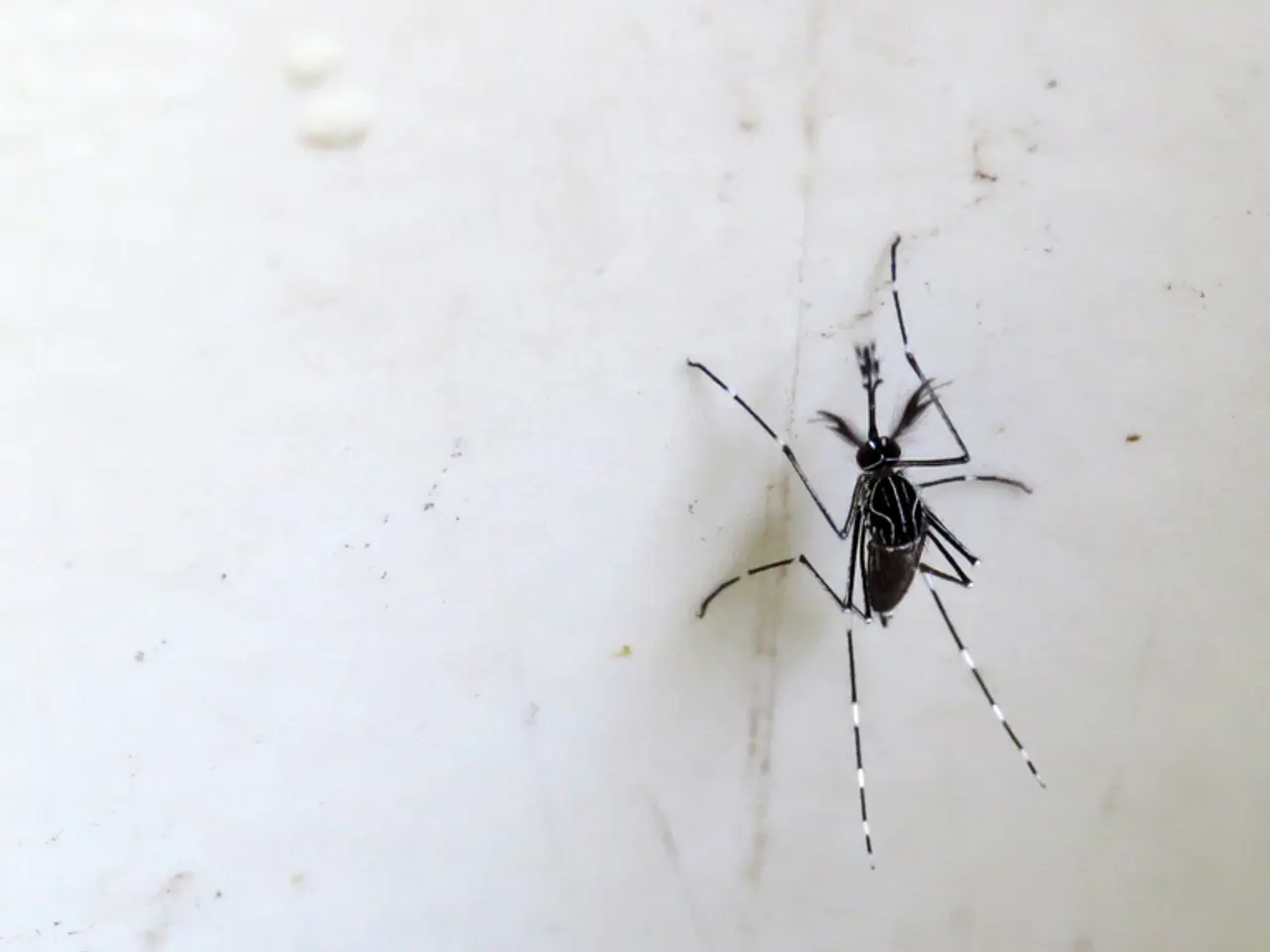First Instance of Chikungunya Fever Imported to Hong Kong Since 2019 Reported
Hong Kong Braces for Possible Chikungunya Outbreak Following Imported Case
Hong Kong is taking preventative measures to control the spread of chikungunya fever after recording its first imported case since 2019. The 12-year-old boy, who recently returned from Foshan, a city in mainland China, is currently being treated at Princess Margaret Hospital in Lai Chi Kok for mild conditions.
The boy stayed in Shunde for almost two weeks before returning to Hong Kong, where his blood tested positive for chikungunya infection at the Centre for Health Protection. Foshan is currently facing an outbreak of chikungunya fever with over 6,100 cases recorded in Guangdong province.
The word "chikungunya" comes from the east African language Kimakonde and means "to become contorted." Symptoms of the fever include fever, joint pain, muscle pain, nausea, and rashes. Chikungunya fever shares similar symptoms with dengue fever, but patients with chikungunya often develop joint pain.
Yuen Kwok-yung, an infectious disease expert, warned that a potential outbreak in Hong Kong could be on a large scale due to weak immunity levels among the population. Yuen also suggests inspecting all cargo from endemic areas and doing anti-mosquito work at cargo areas.
To combat the potential spread of the virus, the Centre for Health Protection (CHP) has implemented several measures. They have reminded the public to maintain strict environmental hygiene and mosquito control, such as eliminating breeding sites, especially during the rainy season. The CHP has also advised wearing long-sleeved clothes, applying insect repellent containing DEET, and avoiding mosquito bite exposure especially at dawn and dusk.
The CHP has strengthened control measures at boundary control points and enhanced local testing capabilities for rapid diagnosis and early detection. They have conducted epidemiological investigations and intensified mosquito prevention and control measures at patients’ residences and locations they visited after symptom onset.
The CHP has issued guidance to doctors and hospitals to watch for chikungunya symptoms in travelers from affected areas (notably Foshan, Guangdong) and to immediately report suspected cases. They have urged travelers from affected regions to apply insect repellent for at least 14 days upon return and closely monitor health for symptoms like fever, rash, and joint pain.
The CHP has also cautioned against self-medication, especially with aspirin or NSAIDs, because of the risk of complications such as hemorrhage and Reye’s syndrome in children.
Macau, which is geographically close to Foshan, is likely to have similar mosquito control protocols and travel advisories in place. The US CDC has issued a Level 2 Travel Health Advisory for Guangdong Province due to the outbreak, supporting these regional measures.
In summary, Hong Kong’s current approach combines enhanced surveillance and testing, mosquito habitat elimination and personal protection advice, health professional alerts and case investigations, traveler monitoring and health education. These multi-pronged efforts aim to prevent the chikungunya virus from becoming endemic locally despite imported case risks from Foshan.
The virus was first identified in 1952 in Tanzania and has since spread to over 110 countries, according to the WHO. The World Health Organization issued an urgent call for action against chikungunya fever as it has affected other parts of the world, including Reunion Island, Madagascar, Kenya, India, and Europe. Europe has seen a growing number of imported cases and some local transmission of chikungunya fever.
About 90% of the cases in Guangdong are concentrated in Foshan's Shunde district. After being infected with chikungunya, some people may experience joint inflammation and swelling that can persist for more than three months in about 40% of patients. Yuen Kwok-yung, an infectious disease expert, suggests testing everyone who returns with fever, joint pain, or rash and implementing anti-mosquito measures around their homes and workplaces.
It is crucial for the public to stay informed and follow the advice of health authorities to prevent the spread of chikungunya fever in Hong Kong.
- Given Hong Kong's current situation with an imported case of chikungunya fever, it may be essential to focus not only on physical health (fitness-and-exercise, health-and-wellness) but also on mental health, considering the potential fear and anxiety this outbreak may cause.
- Chikungunya fever, although primarily associated with medical-conditions and tropical regions (space-and-astronomy), has now reached Hong Kong, highlighting the global nature of chronic diseases (chronic-diseases).
- Beyond the immediate concern about chikungunya fever, the ongoing outbreak in Foshan serves as a reminder of the importance of understanding and researching tropical diseases within the broader context of science (science), with potential implications for public health and wellbeing worldwide.




